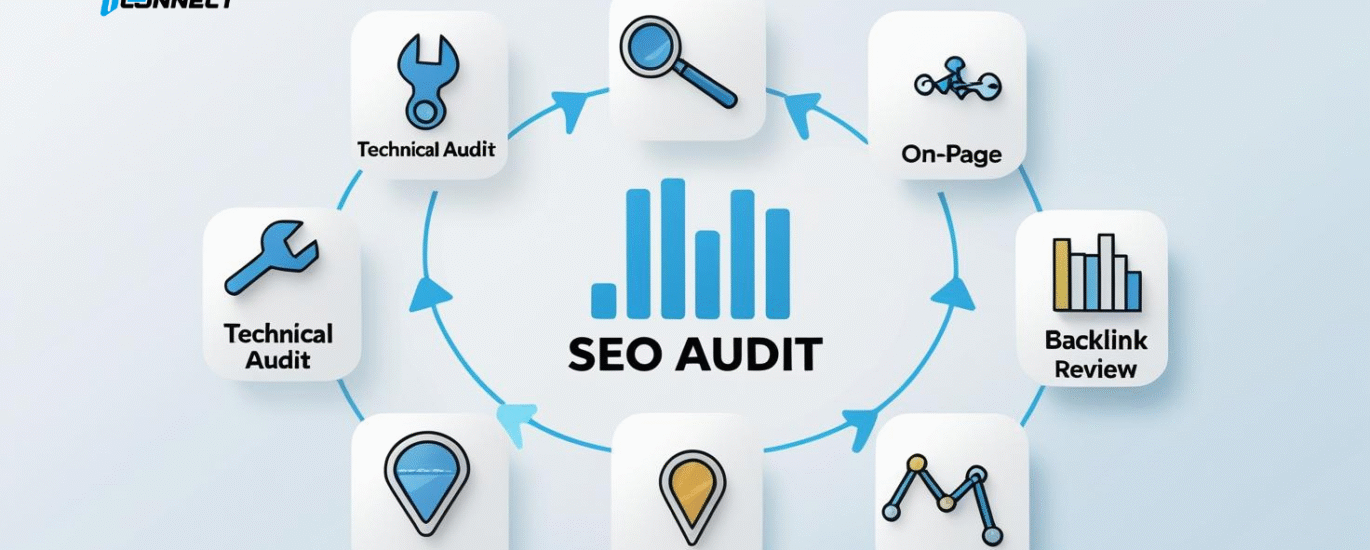Let me take you through a process I’ve personally used for clients across the U.S. to uncover ranking issues, boost visibility, and turn underperforming websites into SEO machines. If you’ve ever wondered why your site isn’t showing up on Google or why your traffic has stalled, it’s time for a full SEO audit. This step-by-step guide is crafted specifically for the U.S. market and designed to be practical, not fluffy theory.
Why SEO Audits Are Critical for Your Website’s Success
Before we dive in, let me say this: every single time I run a proper SEO audit, I uncover something that significantly impacts a site’s performance. Whether it’s a technical glitch, outdated content, or a missing backlink opportunity, there’s always something to fix. And those fixes can lead to measurable gains in organic traffic, rankings, and leads.
Step 1: Start with a Technical SEO Audit
This is where I always begin. Technical issues can cripple a site, even if you have great content. Here’s what I check:
Crawlability and Indexing
- Use Google Search Console to ensure your site is indexed correctly.
- Check for crawl errors, duplicate pages, and unnecessary redirects.
- Use Screaming Frog or Sitebulb to do a complete crawl of your site.
Core Web Vitals and Site Speed
- Run your site through Google PageSpeed Insights and GTmetrix.
- Optimize for Largest Contentful Paint (LCP), Cumulative Layout Shift (CLS), and First Input Delay (FID).
- Compress images, remove render-blocking resources, and leverage browser caching.
Mobile Usability
- Test your site on Google’s Mobile-Friendly Test.
- Ensure responsive design, fast loading, and easy navigation on mobile devices.
Step 2: Audit On-Page SEO Elements
Once the technical foundation is solid, I move to on-page elements. This is where Google figures out what your page is about.
Title Tags and Meta Descriptions
- Ensure each page has a unique, optimized title tag (under 60 characters).
- Write compelling meta descriptions that include your target keywords.
Header Tags (H1, H2, H3…)
- Use only one H1 per page, and include the primary keyword.
- Structure your content using H2s and H3s to enhance readability.
Keyword Optimization
- Perform fresh keyword research using tools like Ahrefs, SEMrush, or Google Keyword Planner.
- Make sure each page targets a unique set of keywords.
- Naturally sprinkle keywords throughout the content (aim for ~2% density).
Internal Linking
- Link to related posts and service pages using keyword-rich anchor text.
- Use a clear URL structure and avoid orphaned pages.
Step 3: Conduct a Content Audit
I believe content is the backbone of SEO. I use this part of the audit to identify outdated, thin, or underperforming content.
Content Quality
- Ask yourself: does this page answer the user’s search intent?
- Update old blog posts with fresh stats, media, and internal links.
Thin Content and Duplicate Content
- Use Siteliner or Copyscape to check for duplicate content.
- Merge or delete pages that add no value.
Blog and Service Page Performance
- In Google Analytics, look at bounce rates and average time on page.
- Optimize content that is underperforming.
Step 4: Backlink and Off-Page Audit
Backlinks are still one of the top ranking factors. But quality beats quantity every time.
Analyze Your Backlink Profile
- Use Ahrefs or Majestic to audit your backlinks.
- Look for toxic or spammy links and disavow them through Google Search Console.
Identify Link Opportunities
- Compare your site to competitors and see where they’re getting their links.
- Consider guest posting, digital PR, and local citation building.
Step 5: Local SEO Audit (If Applicable)
If you run a U.S.-based business serving local areas, this is essential.
Google Business Profile
- Make sure your Google Business Profile is claimed, verified, and optimized.
- Include your correct business name, phone, hours, and local keywords.
NAP Consistency
- Ensure your Name, Address, and Phone number are consistent across all directories.
- Tools like BrightLocal or Whitespark can help automate this.
Local Listings and Reviews
- Get listed on Yelp, Apple Maps, Bing Places, and industry-specific directories.
- Encourage happy customers to leave Google reviews.
Step 6: Analytics and Performance Audit
Lastly, I always look at how the site is actually performing.

Google Analytics
- Check organic traffic trends, bounce rates, and conversion goals.
- Segment your data by device, location, and landing page.
Google Search Console
- Identify pages with high impressions but low clicks.
- Optimize those pages’ meta data and content.
Conversion Rate Optimization (CRO)
- Use tools like Hotjar to see where users drop off.
- A/B test calls-to-action, forms, and page layouts.
My Personal Checklist for Every SEO Audit
Here’s a simplified list I always follow:
- Crawl the site using Screaming Frog
- Run Core Web Vitals and speed tests
- Review on-page SEO for key pages
- Check content quality and keyword alignment
- Audit backlinks and disavow harmful ones
- Evaluate local SEO presence
- Review Analytics and Search Console data
Final Thoughts: Don’t Skip the Audit, It’s Your SEO Lifeline
I can’t stress this enough—if you’re running a business in the U.S. and relying on organic search traffic, an SEO audit isn’t optional. It’s a must. It allows you to see exactly where you stand, what needs fixing, and what your next SEO move should be. I do this every quarter for my clients and it’s been a game-changer
Frequently Asked Questions (FAQs)
What is an SEO audit?
An SEO audit is a comprehensive analysis of your website’s ability to appear in search engines. It evaluates technical, on-page, content, and backlink factors.
How long does an SEO audit take?
For small to medium-sized sites, an audit can take anywhere from 2 to 5 hours. Larger sites with thousands of pages can take days.
Can I do an SEO audit without paid tools?
Yes, you can use free tools like Google Search Console, PageSpeed Insights, and Screaming Frog (free version). But paid tools provide deeper insights.
How often should I audit my website?
I recommend every 3 to 6 months, or after a major site update, drop in traffic, or Google algorithm change.
Is an SEO audit worth it for small businesses?
Absolutely. In fact, small businesses often benefit the most, especially when targeting local search results and trying to compete with bigger players.




